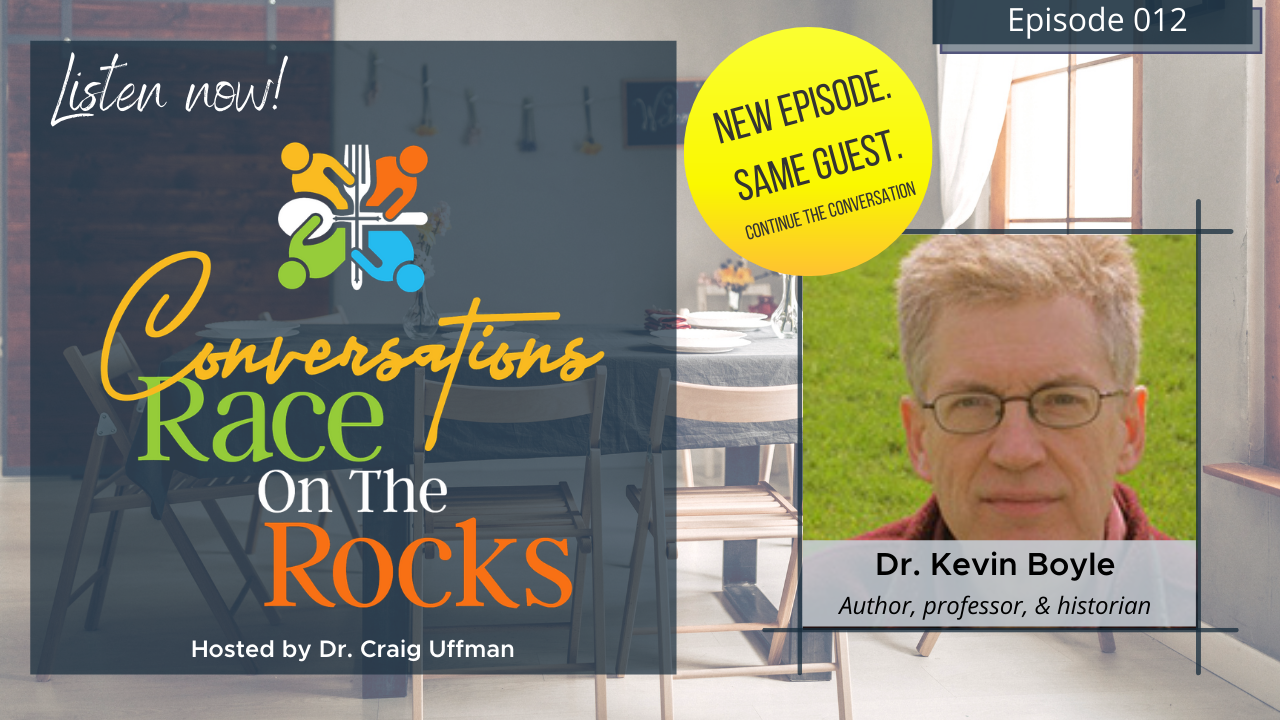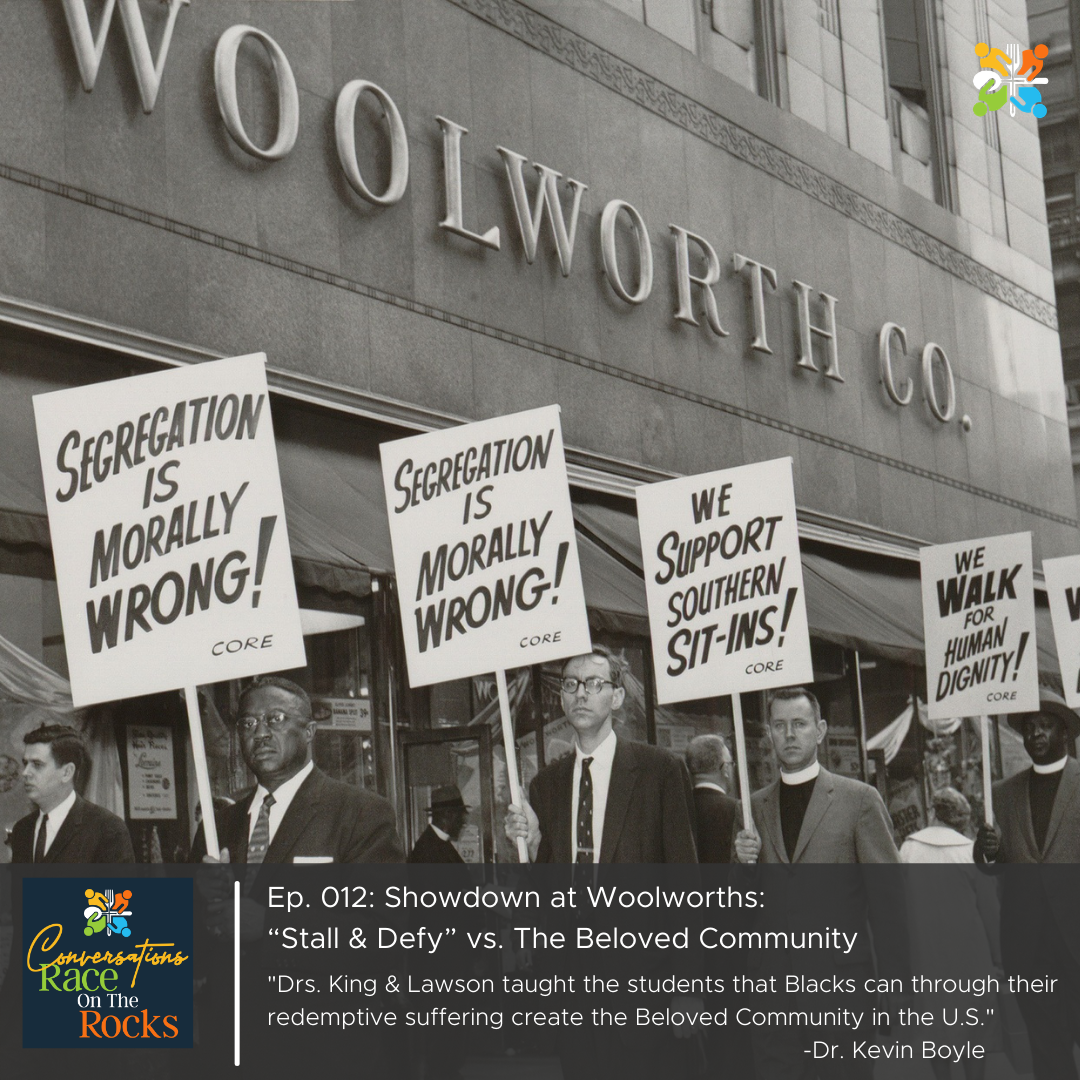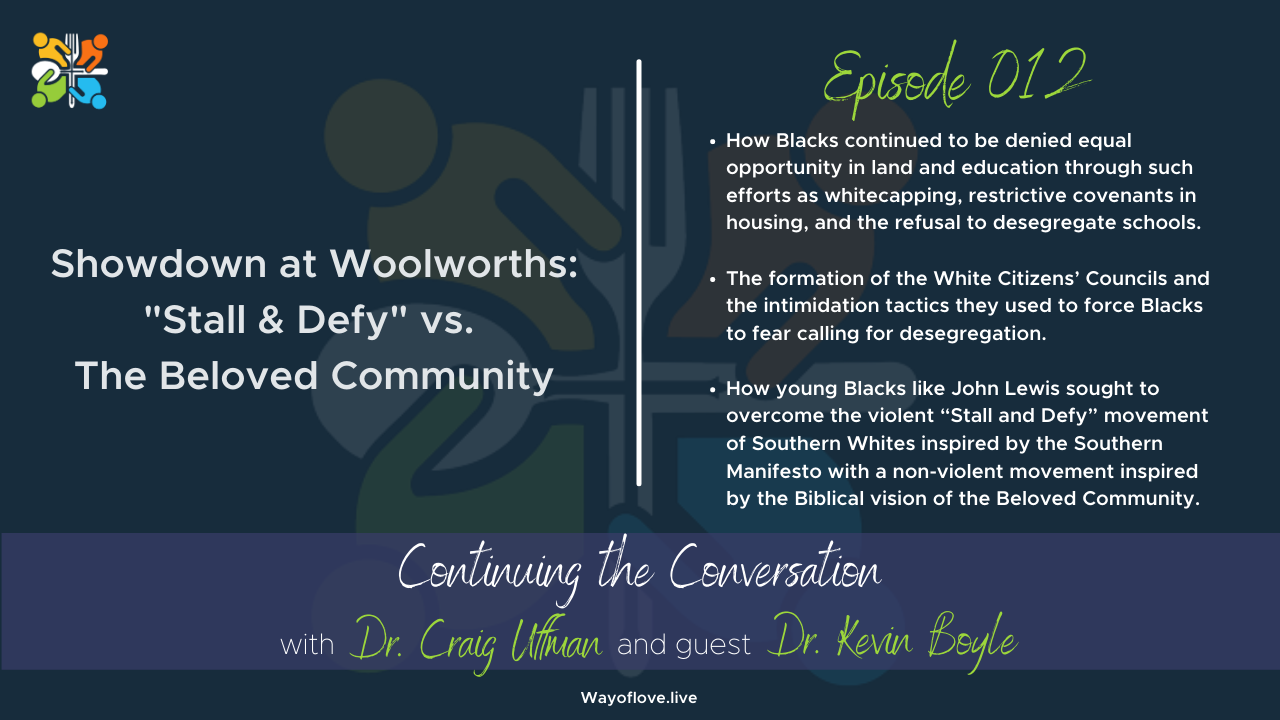"What King says is that White America has embraced the sin of racism - especially the White South - and what African Americans are going to do is that they are going to walk into the face of that sin. And they are going to take that sin on their shoulders. And they are going to suffer for that sin. And they are going to die for that sin. And by that blood sacrifice they will redeem the soul of the nation." - Dr. Kevin Boyle
Listen now on Spotify, Apple Podcasts, Google Podcasts, Stitcher and more!

In the last episode, we began a conversation about our Civil Rights era's struggles and fruits. With our guest Dr. Kevin Boyle, we discussed the efforts to obtain equal opportunity housing and began a discussion about the segregation and desegregation of schools.
Dr. Boyle is a professor at Northwestern University specializing in 20th century United States history. He has a particular focus on modern American social movements, such as the Civil Rights Movement. Dr. Boyle has a long list of publications and honors, including fellowships from the National Endowment for the Humanities and the Andrew Carnegie Corporation. He is the highly acclaimed author of Arc of Justice: A Saga of Race, Civil Rights, and Murder in the Jazz Age, which was a finalist for the Pulitzer Prize and received the National Book Award for Nonfiction and many others.
As we begin to shift our focus to voting rights, we need to cover more ground and discuss why there was such a struggle. In today's episode, we take a few minutes to recap the events we've already talked about that laid the foundation for this struggle, and we dive a little deeper into the segregation of schools and public places.
Questions for Clergy and Other Group Leaders
- How did the Southern states enact their strategy of “stall and defy”?
- How did the Northern states enact their own version of “stall and defy”?
- What was the context that led to the sit-ins at Woolworth’s in Greensboro and Nashville? How were ue everyday practices used to enforce notions of caste?
- What strategy did civil rights leaders pursue in their efforts to eliminate these government-sanctioned traditions and practices of caste? Why was the example of the Beloved Community so powerful for many Americans?

Show Notes
- [3:18] - Dr. Uffman refers back to a previous episode with Dr. Kate Masur. They talked about the national economy fueled by the commodity of cotton and US dominance of this market by exploiting Black labor.
- [4:19] - When Black leaders were asked what they wanted most that would enable them to prosper as newly freed people, they named just two things: land and education.
- [5:01] - Especially in the South, in many ways, Whites denied Blacks land and education, giving them little option but to sell their labor for low wages.
- [5:48] - For two centuries, Blacks were denied education to prevent them from rising above their racial hierarchy station. For generations, the United States would not invest in the education of Blacks.
- [6:34] - Dr. Uffman describes the measures taken by southern Whites to prevent Blacks from migrating north.
- [7:11] - In the 20th century, Dr. Uffman explains white capping as running Blacks off the land by extralegal means through terror and intimidation.
- [7:47] - Whites continued to invent ways to block Blacks from gaining space and education, specifically restrictive covenants in housing and segregated schools.
- [8:31] - Through government-initiated redlining, Blacks couldn't get a mortgage or live in areas outside their designated and segregated neighborhoods.
- [8:57] - The cycle of progress followed by backlash continued from the Civil War onward.
- [9:16] - After decades of obtaining incremental rulings, great American heroes like Thurgood Marshall proved to the Supreme Court that states couldn't provide separate but equal educational opportunities.
- [11:42] - In May of 1954, there was a period where Civil Rights activists thought that change would come right away. Five hundred school districts voluntarily desegregated their schools. There was a sense that real change was coming.
- [12:43] - "And then what started to happen was that many of the white politicians of the south, the white democrats who had a real vested interest in maintaining the Jim Crow system, mounted this full-throated attack on the Brown ruling. They said that it was an abomination." - Dr. Kevin Boyle
- [13:12] - The Supreme Court did not say how fast the states must comply with the Brown ruling. Many southern states refused to comply, which caused a constitutional crisis.
- [14:10] - The opposition that Southern leadership put in place filtered down into the business class who created a White Citizens' Council network. Dr. Boyle describes what this did to intimidate Blacks through their economic standing.
- [15:03] - To benefit from the order to desegregate schools, Blacks needed to appeal to their school districts for permission to attend a White school. The point of the White Citizens' Councils was to intimidate Blacks so that they would not press for desegregation in their community.
- [15:44] - From the business class, the opposition trickled down into violence. Dr. Boyle uses the story of Emmett Till to illustrate the level of violence during this time.
- [16:29] - Bringing the Southern Manifesto into the discussion, Dr. Uffman lists some prominent senators and representatives who did not sign, including Lyndon B. Johnson.
- [17:12] - Dr. Boyle explains the feedback loop created by the initial opposition of southern politicians that led to the Southern Manifesto.
- [17:58] - Dr. Uffman compares the Southern Manifesto language to the language we hear today regarding the Supreme Court's overreaching.
- [18:41] - After the Brown ruling, Southern Whites increased efforts to suppress Black votes. Dr. Uffman points out that the state of Georgia changed its flag and passed a resolution repealing the 13th, 14th, and 15th Amendments to the U.S. Constitution.
- [19:56] - Dr. Boyle explains that Whites had doubled down on Jim Crow as a defense of what they had come to see as their way of life. It turned already rapid racism into something deeper and more explosive.
- [21:19] - Dr. Uffman lists the states that by 1963 did not have a single black child attending school with white children.
- [22:09] - The state of Delaware voted to take a 12-year delay before they even thought about desegregating schools. Many districts in the state of Virginia shut down their public school system completely for years.
- [24:37] - The implementation order that came a year after the Brown ruling, called Brown II, decreed that states would need to desegregate schools "with all deliberate speed." The vague language created the possibility for states to ignore the ruling, and they did.
- [25:44] - Later, part of federal aid qualification to public schools was to comply with Brown. Then schools tried to find ways to avoid compliance without appearing to.
- [26:33] - Dr. Uffman illustrates just how long it took for his hometown to adopt any solution to comply with the Brown ruling.
- [27:33] - Most people may not realize that the Brown decision did not apply to the northern states. It applied only to states where schools were segregated by law. In the north, although schools were segregated, they were not segregated wasn't by law.
- [28:26] - The NAACP then launched a series of court cases that lasted many years in an attempt to get justices to see that northern schools were also segregated.
- [30:03] - The northern states got around this because children attended their neighborhood schools. Because neighborhoods were segregated, they didn't need to enforce segregation of schools by law.
- [32:00] - The segregation of space served two purposes. One was economical, and the other was about humiliation. Dr. Boyle uses the examples of separate drinking fountains and seating on buses to illustrate how Whites reminded Blacks symbolically that they were of less value in the social hierarchy.
- [33:08] - Dr. Boyle shares a story from a colleague not being allowed to try on a hat in a Woolworth's in the 1960s because of the color of her skin. This was so humiliating for her that she remembers it decades later.
- [34:40] - Access to public spaces was all symbolic. It was about imprinting that caste system into people's minds, both Blacks and Whites.
- [36:18] - Dr. Boyle describes the start of the sit-in movement and tells the story of Reverend James Lawson as an organizer of nonviolent campaigns against racial segregation.
- [38:50] - Shifting to Martin Luther King, Jr., Dr. Boyle explains how King took the Christian story of redemption and infused it into the movement.
- [40:44] - Before the sit-ins took off, Lawson preached and trained young men and women, including John Lewis. The goal of sit-ins during this wave of activism is to create "The Beloved Community."
- [42:09] - Dr. Boyle describes the beginning of the sit-in movement that led to Martin Luther King Jr.'s creation of SNCC. SNCC became the "shock troops" of the Civil Rights Movement.
- [42:54] - Next episode, we will welcome back Dr. Kevin Boyle to discuss voting rights.
Links and Resources
Connect with Dr. Craig Uffman:
More from Dr. Kevin Boyle:

